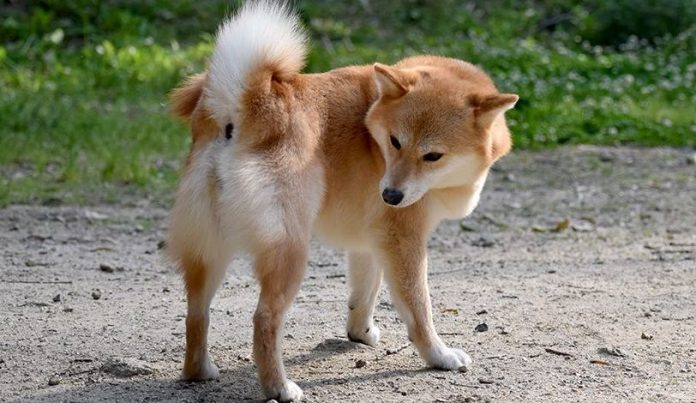It is a common misconception that a dog needs worming when he is seen to be biting his rear end, or scooting past on his bottom, the moment you have friends over for coffee!
The probable cause for this discomfort (and embarrassment on your part!) is that the dog needs his anal glands expressed.
The dog has two pea-sized anal sacs situated either side of the anus, approximately at the seven and five o’clock positions.
These sacs contain a very strong smelling liquid, which is usually secreted when the dog has a bowel movement.
The feces when passing through the anus, pushes against the anal sacs thus squeezing a little liquid out.
This liquid is thought to be a dog’s ‘calling card’, this is why most dogs tend to say ‘hello’ to each other by sniffing each others rear-ends!
Sometimes however, the bowel movement can be too soft to push against the sacs and a build-up of liquid occurs.
The anal sacs can become overfull and cause discomfort. Alternatively, the sacs can become blocked and impossible to empty.
If these problems are ignored, they do not go away. Abscises can form, infections can set in and self-inflicted wounds occur due to severe biting, hair loss, coat discoloration, and obviously enormous discomfort and pain for the dog.
Sometimes all that is needed is a slight increase of fiber in the diet of the dog, to harden the stools.
However, there are other factors that may contribute to the problem. The consistency of the liquid produced by the glands may be naturally difficult to pass, the actual confirmation of the anus, or even obesity. Therefore sometimes a helping hand is required!
Many groomers empty the dog’s anal glands as a matter of form during the bathing process.
However, it is now believed that unless requested by the owners, having learned from the vet that it is necessary, it is best to leave the anal glands untouched, for once the dog gets into a routine of having them emptied periodically, they will always need manually emptying.
It is important to note the color and texture of the secretion to report to the owner so that they may seek veterinary attention if they feel it is necessary.
A black paste, pus, or blood present is not normal. Soreness when touched, inability with ease to empty is a sign of a blockage, any lumps around the anus should be mentioned to the owner.
Usually, expressing the sacs externally is enough to relieve the discomfort. This should not cause any pain to the dog and takes seconds to do.
Excessive squeezing and prodding must be avoided as damage to the glands could occur. The vet may empty the sacs internally while examining the dog. This is NOT for the groomer or owner to do.
If the problems persist, the vet may advise the removal of the glands, as a last resort. They do not like undertaking this operation as the muscles around the anus can weaken and sometimes become permanently damaged.
After the operation the dog usually feels great discomfort for a considerable length of time.

